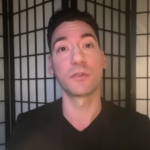Blog Post
Pregnant abortionist saw aborted baby move in metal dish
By Jonathon Van Maren
The insular world of the abortion industry is a bizarre place, one where up is down, down is up, some babies are precious, and other babies the same age are, quite literally, garbage. It is a world where your interpretation of the facts must be strained through ideology, because otherwise the reality of day to day work in a clinic emptying the wombs of pregnant women would simply be too hard to bear. For that reason, many abortion workers find it incredibly difficult to do their job while pregnant. After all, how can they celebrate the development of tiny hands and feet, their pre-born child sucking his or her thumb, their baby’s hiccups in the womb—when at the same time, their livelihood depends on others steadfastly ignoring the ongoing miracle within them and asking that the abortionist remove and dispose of the child?
Some abortionists find that despite their best efforts, reality insists on confronting them. Abortionist Lisa Harris described her experience performing an abortion while pregnant this way:
With my first pass of the forceps, I grasped an extremity and began to pull it down. I could see a small foot hanging from the teeth of my forceps. With a quick tug, I separated the leg. Precisely at that moment, I felt a kick – a fluttery “thump, thump” in my own uterus. It was one of the first times I felt fetal movement. There was a leg and foot in my forceps, and a “thump, thump” in my abdomen. Instantly, tears were streaming from my eyes – without me – meaning my conscious brain – even being aware of what was going on. I felt as if my response had come entirely from my body, bypassing my usual cognitive processing completely. A message seemed to travel from my hand and my uterus to my tear ducts. It was an overwhelming feeling – a brutally visceral response – heartfelt and unmediated by my training or my feminist pro-choice politics. It was one of the more raw moments in my life. Doing second trimester abortions did not get easier after my pregnancy; in fact, dealing with little infant parts of my born baby only made dealing with dismembered fetal parts sadder.
Notice her language—her reaction was visceral, “heartfelt and unmediated by my…feminist pro-choice politics.” In that moment, she knew that there were two children present—her own, squirming safely beneath her heart. And another, a baby the same age, a child she was pulling from his or her mother’s womb, piece by bloody piece. One would end up in a crib, loved and cuddled and cooed over. The other would end up cooling in pieces in a dumpster or packed into a medical waste container to be reduced to ash. The only difference between the two was how their mothers felt about them.
In a questionable attempt to humanize abortion work, another abortionist, Christine Henneberg, recently wrote a column for the New York Times on doing her job while carrying a child. She begins her personal reflection by recounting a bit of abortionist shoptalk:
Recently a colleague asked me if I’d had trouble working while I was pregnant.
“Actually I was fine,” I said. “I know a lot of people have a hard time, but it wasn’t an issue for me.”
She raised her eyebrows. “Wow. Good for you. I was a mess.”
We weren’t just talking about nausea and swollen feet and low back pain. She and I are abortion doctors. We routinely perform procedures well into our patients’ second trimester, when the fetus is well-formed and easily recognizable as humanlike, even “life”-like. Baby-like.
I’ve always been good at compartmentalizing, drawing boundaries between work and the rest of my life. A lot of doctors will tell you this about themselves — if compartmentalization doesn’t come naturally, it’s beaten into you in training. Every time you duck into a hospital closet to cry, someone will tell you some version of: You have to maintain some boundaries. You can’t let it bleed over, you’ll never survive.
I think the phrase “bleed over” here hits a bit closer to home than Henneberg intended, but it certainly gets to the point—and reveals, again, the fact that cognitive dissonance is not only common in the abortion industry, it is an essential survival mechanism. Despite that, the truth about abortion creeps into their thoughts regardless: Henneberg reveals that when she first failed to get pregnant, she was worried that it was “bad karma” because she was an abortionist. She admitted that this idea surfacing in her thoughts—that “I deserved some type of punishment for the work I do”—“should have told me that my boundaries weren’t as neat and tidy as I thought.” The babies had begun to bleed over.
She went on:
A week or two later I took a positive pregnancy test, followed closely by my first ultrasound, which was performed by a colleague at the abortion clinic. I saw the tiny embryo inside me, its first flicker of a heartbeat. Then the fear really began.
Like any doctor who cares for pregnant women, I have seen miscarriages of all types, in every trimester: The clotted blood a woman thinks is just her late period. Horrible preterm births in the hospital, fluid everywhere, the fetus — perfect and translucent and too tiny to live — slipping between her legs. Stillbirths the week before the due date, the week after. Babies born alive, but so deformed you can’t look — you just hear them gasping for breath.
I kept waiting for it, any of it, to happen to me. Nothing would’ve surprised me except a pregnancy that was normal, uneventful, routine.
There was one time when I almost fell apart: I was in my second trimester, performing a 17-week procedure on a patient. The fetus, which is normally extracted in parts, came through the cervix intact. I dropped it in the metal dish and I saw it move, or thought I did. It was all I could do not to run from the procedure room crying.
That was the only time.
At first I was nervous about what my patients would think and say when I started showing, but they always expressed genuine happiness for me, even in the midst of their own difficulties. “Girl, you are going to love that baby,” one mother of three said to me as I prepped her for her procedure. A 19-year-old woman, ending her first pregnancy, smiled at me through her tears. “It’s your time,” she said.
In fact, she writes, the only really difficult experience after the baby that moved in the metal dish was an anti-abortion protestor yelling at her, calling her a baby-killer. This abrasive fellow makes a convenient appearance in her column, just when the reader needs to be distracted from the fact that those “perfect and translucent” children she describes do not look that way when they are “extracted in parts.” She is pulling babies apart, and she knows it. But yet, she goes on, perhaps not realizing how damning her words really are:
I do not mean it’s an easy job. Of course it’s not. There is the protester on the sidewalk. There is the fetus in the dish, the perfect curl of its fingers and toes. Sometimes it reminds me of my daughter — how could it not? But that is precisely the point.
As a doctor, I can draw a distinction, a boundary, between a fetus and a baby. When I became a mother, I learned that there are no boundaries, really. The moment you become a mother, the moment another heartbeat flickers inside of you, all boundaries fall away.
Nevertheless, as mothers, we must all make choices. And we must live with the choices that aren’t ours to make. We can try to compartmentalize. We can try to keep things tidy and acceptable. But in reality, everything is messy: the work of doctors, the work of mothers, and the love of each one of us for our children.
And yet somebody has to do the work.
No. The truth is that nobody has to do this “work.” We do not need to be extracting “perfect and translucent” children from their mother’s wombs and dropping them into metal dishes to breathe their ragged last. We do not need to be suctioning babies into scraps to put out with the trash. We could, instead, respond to crises with genuine, compassionate care and assistance—we could kill the problem, not the children. Abortionists know what they are doing. Pregnant abortionists cannot ignore what they are doing. And neither should we.
____________________________
For anyone interested, my book on The Culture War, which analyzes the journey our culture has taken from the way it was to the way it is and examines the Sexual Revolution, hook-up culture, the rise of the porn plague, abortion, commodity culture, euthanasia, and the gay rights movement, is available for sale here.








